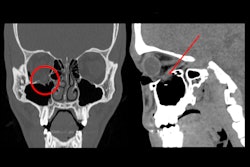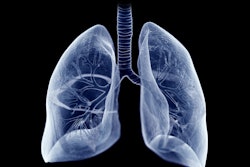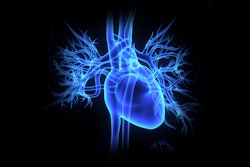Opportunistic CT imaging data found on abdominal examinations performed for other indications can be used to improve patient care, according to a presentation delivered at the recent International Society for Computed Tomography (ISCT) meeting.
Dr. Perry Pickhardt, of the University of Wisconsin (UW) in Madison, U.S., outlined the benefits of using findings from CT imaging to address a range of disease conditions, noting that the modality is not only commonly used but also that its results are "objective, data-rich, and generalizable."
 Perry Pickhardt, MD.
Perry Pickhardt, MD.
"There's a large volume of body CT scans performed in adults, and … fully automated, explainable AI solutions [are emerging to analyze the data]," he told session attendees in Boston on 12 September. "[These CT findings contribute to] precision medicine and value-added initiatives."
CT scans offer valuable body composition data, visualizing a patient's visceral and subcutaneous fat; skeletal muscles; aortic calcium; and liver, spleen, and bone health, Pickhardt noted. He listed a range of diseases and conditions CT imaging can evaluate opportunistically, from osteoporosis, cardiovascular disease, and sarcopenia to frailty assessment and the identification of unsuspected genetic conditions, and expanded on the following:
Metabolic syndrome and diabetes: "[There's a] a constellation of potentially reversible cardiometabolic risk factors in the setting of central obesity," he said. "And CT biomarkers for] pancreatic and visceral fat [can inform type 2 diabetes assessment)." Pickhardt in particular referred to a recent study on which he was senior author that showed that weight loss among individuals using semaglutide (Ozempic) is associated with favorable body composition changes noted when comparing body composition before initiating treatment and after.
Hepatic steatosis and fibrosis: "[CT imaging can visualize] hepatosplenic volume changes and liver surface nodularity," Pickhardt said.
Biological versus chronological age: "Historically, chronological age has driven many healthcare decisions regarding prevention, screening, and intervention," he said. "[But there's] growing awareness that an effective 'biological age' would better reflect life expectancy. CT biological age is based on cardiometabolic biomarkers, which better reflect phenotypic aging at the tissue and organ level, effectively combine environmental and genetic factors, and may reveal objective findings of silent, presymptomatic disease," he said.
Pickhardt conceded that there are challenges to using CT opportunistically, including the availability -- or lack thereof -- of AI algorithms; radiologist, referring provider, and patient acceptance of AI; the need to generalize results to more diverse patient cohorts and to develop appropriate referral networks for patients; and payment models for reimbursement, to name a few. There are also potential harms that can arise from opportunistic CT findings, from the potential for overdiagnosis and insurance/actuarial implications to how the findings are actually acted on. Yet overall, the additional data that can surface from a CT exam is valuable, Pickhardt concluded.
"Abdominal CT is frequently performed for a wide variety of clinical indications, [but] robust additional data often goes unused," he said. "[Opportunistic CT findings add] value to services we already provide … and if [radiologists] don't drive [their use], others will."




















